Table of contents
Amaranth ( Amaranthus caudatus ) is one of the gluten-free pseudocereals and is - raw or cooked - a valued source of protein in vegetarian or vegan cuisine. The small, nutrient-rich seeds of the garden foxtail are still known as kiwicha in the Andean region.
Use in the kitchen:
Similar to rice, amaranth is cooked in twice the amount of water for about 25 minutes. The small grains then swell and form a gelatinous mass. Cooked amaranth brings variety to the lunch table as a side dish, but it is also excellent for vegetable stir-fries, casseroles, patties or as a filling. In raw food cooking, amaranth can be allowed to germinate; it requires temperatures of 25 °C for this.
Thanks to its pleasant nutty taste, amaranth also goes well in sweet dishes. Cooked in (plant-based) milk, it creates a kind of modern porridge for breakfast or as a dessert. Puffed amaranth , which is made in a similar way to popcorn, is popular in muesli and yoghurt or in making bars . Read this recipe to find out how to puff amaranth in a large pot without fat. Amaranth flakes are also now being used as an ingredient in muesli.
Amaranth flour can be used to make bread and (pan)cakes, but it should be mixed with flours that contain gluten in a ratio of 1:3 or 1:2. Amaranth does not contain gluten, the protein needed for baking. 1
You can eat amaranth raw: Shortly before eating the seeds raw, it is advisable to grind them in a grain mill or coffee grinder. This allows the body to absorb the nutrients better. However, the grinding process releases bitter substances and gives the pseudo-grain an unpleasant aftertaste. Amaranth also contains tannins, phytates and oxalates, which inhibit the absorption of nutrients in the intestine. For this reason, amaranth should only be eaten raw in moderation and, if possible, soaked beforehand, with the soaking water then thrown away. 2
Pseudocereals such as amaranth, buckwheat or quinoa are less suitable as baby food. The reason for this is that they contain substances such as tannins or saponins that are harmful to the baby's health and the resulting limited availability of minerals, vitamins and proteins. 3
The spinach-like and protein-rich leaves as well as the leaf shoots, shoot tips and young, budding flowers of all amaranth species are suitable for consumption. They make delicious fillings for vegetable strudel, delicious spinach, enrich salads, taste great in vegetable dishes and are a fine ingredient for patties, sauces or vegetable soups. 4,5 The sweet-tasting and mostly woody taproot can be finely grated and used in the kitchen. 4
Amaranth is a component of the gluten-free and raw vegan Erb-Müesli . It contains citrus fruits rich in vitamin C as well as berries that provide antioxidants, other pseudocereals, seeds and golden millet . Also try the Erb-Müesli plus oat flakes variant.
Vegan recipe for amaranth porridge with plums:
For 2 portions, bring 150 g of amaranth to the boil in 0.5 l of nut drink and simmer for 20 minutes. Stir regularly as amaranth burns quickly. Leave to swell for at least 5 minutes on the stove that has already been turned off. During this time, sweeten as desired, season with 1 teaspoon of cinnamon and cut the plums into pieces. Garnish with the fruit and a handful of chopped walnuts or alternate layers of plums and amaranth porridge.
Vegan recipe for stuffed peppers with amaranth and smoked tofu:
First, cook 150 g of amaranth in vegetable stock . Then fry diced smoked tofu (200 g) with a diced onion and a chopped garlic clove . Fold in amaranth and a can of cooked black beans . Fill 2-3 deseeded peppers with it and garnish with a cream made from almond butter , yeast flakes and salt . Line a casserole dish with tomato sauce or fresh strained tomatoes and cook the stuffed peppers in it in a preheated oven (180 °C) for 20 minutes.
Recipe for amaranth tea:
Pour 250 ml of hot water over 1 tablespoon of dried amaranth leaves and let the tea brew for 8 minutes before straining. 6
| Not only vegans or vegetarians should read this: Vegans often eat unhealthily. Avoidable nutritional mistakes . |
Shopping - where to buy?
Amaranth seeds are not usually part of the range of standard supermarkets and discounters. You can get them in organic supermarkets such as Denns or Alnatura , but also in organic shops, health food stores and drugstores. In addition to the seeds, organic shops also offer amaranth pops, amaranth flakes and amaranth flour.
Puffed amaranth is already somewhat more common on supermarket shelves (e.g. at Coop , Migros ) and can often be found in the organic section of larger, well-stocked stores or in the online shops of Edeka , Inter-Spar , Rewe and Hofer . In the supermarkets mentioned, amaranth is also often found as an ingredient in muesli mixes, yoghurt preparations, crispbread or puffed waffles. At Aldi , Lidl , Denner or Volg, amaranth is currently only available in exceptional cases.
The amaranth harvest takes place during the season from September to October , but the grains are available all year round .
When shopping, we recommend looking for amaranth from controlled organic cultivation in order to keep the pollution caused by chemical pesticides to a minimum. In some cases, you can already buy (puffed) amaranth from the Alpine region (Austria), which scores highly in ecological terms.
Found in the wild:
Amaranth ( Amaranthus caudatus ), also known as garden foxtail, probably developed from the plant Amaranthus quitensis , which grows on river banks in extratropical America. Wild populations of garden foxtail can be found in temperate and warm zones. 1
The garden foxtail is an annual, herbaceous plant that reaches a height of one meter, rarely up to two meters. The inflorescence, which can grow up to 1.5 m long, consists of numerous, mostly dark purple colored flower clusters. The plant develops single-seeded capsules that are about 1.5-2.5 mm larger than the perianth. The pseudocereal seeds are about 1-1.5 mm long and ivory, reddish or dark brown. 1
The leaves and the young, budding flowers are suitable for use in the kitchen from spring to summer. The shoot tips should be picked in early summer before flowering, while they are young and elastic. All parts of the plant can be dried in an airy and shady place for tea, infusions or liquid extracts. The seeds are harvested when they are ripe. 5,7
Storage:
Amaranth seeds have a shelf life of several months. It is best to remove the plastic packaging after purchase. The seeds should be stored in a dry, light-protected container in a resealable container. Compared to grains, which can be stored for several years, amaranth spoils much more quickly due to its high proportion of highly unsaturated fatty acids. The easiest way to tell whether the seeds and the foods made from them, such as flour, flakes or meal, are still edible is by their smell. Oxidized amaranth products smell unmistakably rancid.
Ingredients - nutritional value - calories:
Why is amaranth so healthy? Amaranth is rich in essential proteins (protein) with 4.4 g/100g - with a good ratio of the individual amino acids. This is comparable to teff (4.4g), kamut (4.38), wheat bran (4.35), hazelnut (4.3), spelt (4.28) and soybeans (4.2g). If you compare the total protein, soybeans win with 43 g/100g. Hemp seeds contain 34 g, peanuts 26 g and amaranth 14 g/100g (comparable to wild rice , wheat bran, wheat ). 8
The amount of fiber (6.7 g/100g) in amaranth is about the same as in dates , avocados , sorghum , walnuts, mustard seeds andraspberries . 8
The manganese found in the outer layers is present in abundance at 3.3 mg/100g, very similar to wheat, cumin and walnuts. 8 You can read why this essential trace element plays an important role in carbohydrate metabolism, the urea cycle, the endogenous antioxidant system and connective tissue in our specialist article on manganese . However, various spice plants offer many times more.
The iron content of amaranth is 7.6 mg/100g, which is comparable to beans, hemp seeds, chia seeds and teff. 8 The simultaneous consumption of vitamin C-rich fruits or vegetables promotes the bioavailability of plant-based iron.
However, amaranth also contains varying amounts of indigestible tannins, phytates and oxalates. 2 More on this below.
Although amaranth has a good nutrient density, it would be an exaggeration to call it a superfood. However, it should be noted that the combination of grain with a pseudo-grain such as amaranth results in a high-quality plant-based protein combination and a balanced ratio of essential amino acids.
Which is better, quinoa or amaranth? If you compare the protein content of the two pseudocereals, you will see that the amount and composition are comparable. Both types are also rich in minerals. Compared to amaranth, however, quinoa contains highly variable amounts of saponins, which can have a negative effect on the permeability of the intestinal mucosa. You can find out how to reduce the saponins in quinoa HERE .
For further information, please see the detailed nutritional tables below.
Health aspects - effects:
Amaranth, which is valuable from a nutritional point of view, is one of the gluten-free pseudo-cereals (amaranth family), so amaranth seeds are a complete grain substitute for gluten intolerance. 4
Amaranth is suitable as a dietary food for people with celiac disease (sprue, gluten-sensitive enteropathy). Look for the gluten-free symbol (crossed-out ear of corn), which only licensed products may carry. This way you avoid contamination with foods containing gluten.
Dangers - Intolerances - Side effects:
Is amaranth poisonous? Amaranth has been known as a valuable food for thousands of years. Although the pseudocereal is not poisonous, it does contain relatively high concentrations of tannins, oxalates and phytates. These plant substances can bind food proteins, enzymes, minerals and trace elements and thereby reduce the absorption of nutrients in the intestine. 2
At this LINK you will learn how to reduce phytic acid and that it also has positive properties. Studies show that technological processes can reduce the tannin content in amaranth to concentrations close to zero. However, the BfR (Federal Institute for Risk Assessment) does not have any data on the actual concentration of amaranth products on the market in Europe. 2 People who are prone to oxalate-containing kidney stones should refrain from consuming excessive amounts of amaranth. 4
The pseudocereals amaranth and quinoa are not recommended for infant nutrition due to their anti-nutritional properties. The Research Institute for Child Nutrition in Dortmund points out that infants are particularly at risk due to their immature digestive systems. 9
Use as a medicinal plant:
what is amaranth good for? The entire amaranth plant is used medicinally. The iron-rich medicinal plant is used against anemia and all types of bleeding. It has an anti-inflammatory effect, is generally strengthening and is used for vitamin C deficiency. Crushed flower heads can be used externally for arthritis. 5 In Central Europe, for example, the black foxtail ( Amaranthus hypochondriacus syn. A. hybridus ) is used as a medicinal plant. 7
Folk medicine - naturopathy:
In traditional Indian medicine, shamans used amaranth for bleeding in the gastrointestinal tract and for anemia.
Occurrence - Origin:
Where does amaranth come from? Amaranth, one of the oldest crops known to mankind, originates from southern Mexico and Guatemala. Kiwicha (amaranth) has been cultivated in the Andes and Central America for several thousand years, for example by the Coxcatlán culture in Tehuacán in Mexico. Amaranth seeds have even been found in graves that are almost 9,000 years old. The Aztecs , Incas and Mayans used the grain-like seeds as an important source of protein and for religious ceremonies. After colonization, the cultivation of amaranth fell sharply, but in recent years it has become increasingly popular and is becoming more important in organic farming. 1,4
Today, amaranth ( Amaranthus caudatus ) is cultivated in Peru, Bolivia, northern Argentina and in the Himalayas from Kashmir to Bhutan. The species has been cultivated in Europe since at least 1568. Here, the garden foxtail is also used as an ornamental plant, cut flower or dried flower. 1
Amaranth is currently being bred in Austria. The result is the early-ripening "New Type" strain, which also has a higher thousand-grain weight and is well suited to the production of amaranth pops. In practical cultivation in Lower Austria, yields of around 2 t/ha are achieved. In 2008, according to Austria Statistics, amaranth was grown on a total of 65 hectares. The majority is sold as organic produce. 10,11
Growing in the garden:
Amaranth plants, which need warmth, prefer sunny locations and nutrient-rich soil. The soil should be thoroughly weeded and the earth should be deeply loosened. Seedlings can be grown from March onwards and then planted out at a distance of 30 x 40 cm. Direct sowing takes place after the last frosts from the end of April to mid-May. Plenty of watering and high humidity promote leaf colouring; waterlogging and frost should be avoided. When the seeds are ripe, cut off the whole plant and hang it over a large base to dry. One plant produces between 30,000 and 60,000 seeds. 6,7,12
Cultivation - Harvest:
Amaranth grows at altitudes of up to 3,200 m and can be grown on sandy, loamy, well-drained and slightly acidic to alkaline soils. 1
Sowing is carried out on weed-free fields using a precision seed drill. Germinating seeds are particularly sensitive to frost, silting and drought. Weed control is carried out by hand or mechanically using a machine hoe. In the best case scenario, this requires 10 to 20 hours of work per hectare, but more than 100 hours for heavily weeded fields. Amaranth is particularly suitable for organic cultivation, as no significant diseases or pests have been identified so far. The flowering period is from July to September. 10,11
From mid-September, sometimes until November, the harvest is carried out using conventional combine harvesters. An early frost has a positive effect on ripening and harvesting work. After harvesting, amaranth grains have a relatively high grain moisture content. In order to make the seeds storable, the harvested crop is dried immediately after harvesting. The yield of amaranth is around 500-4,000 kg/ha, with a thousand grains weighing around one gram. 10,11,12
Danger of confusion:
There is a danger of confusion with ragweed ( Ambrosia artemisiifolia ) due to similar-looking inflorescences. But a look at the leaves reveals which plant you are dealing with. The leaves of amaranth are undivided, those of ragweed are usually doubly pinnate. 13
Animal protection - species protection - animal welfare:
The numerous flowers of the amaranth plant are of great benefit to bees and insects. 14,15
General information:
The garden foxtail ( Amaranthus caudatus ) is a plant species from the amaranth genus ( Amaranthus ) native to South America. The genus belongs to the amaranth family (Amaranthaceae) and, according to Wikipedia , includes 60 to 98 species that are found almost worldwide. In the Andean region, the garden foxtail is known as Kiwicha, which comes from the indigenous Quechua language. 1
Is amaranth a type of grain? Amaranth is a dicotyledonous plant and is a pseudocereal, in contrast to the "true cereals", which are monocotyledonous grasses. 4
The best-known pseudocereals:
In addition to the amaranth ( Amaranthus ), the knotweed plant buckwheat ( Fagopyrum esculentum ) and the amaranth plant quinoa ( Chenopodium quinoa ) are important for nutrition. Other nutritionally relevant amaranth species are the panicle amaranth ( Amaranthus cruentus ) and the black amaranth ( Amaranthus hypochondriacus ). 4 Closely related and used in a similar way is kañiwa or cañihua ( Chenopodium pallidicaule ). Also known as pseudocereals are the seeds of the Mexican chia ( Salvia hispanica ) from the mint family.
Alternative names:
Alternative names and common spellings for amaranth are amaranth, amaranth grains, amaranth grains, amaranth seeds, amaranth seeds, foxtail, garden foxtail, garden foxtail, Inca wheat or kiwicha.
The English name is amaranth. There are various spellings and names such as foxtail amaranth, garden amaranth, Inca wheat, pendant amaranth or purple amaranth.
Literature - Sources:
Bibliography - 15 Sources
| 1. | wikipedia.org Garten-Fuchsschwanz. |
| 2. | mobil.bfr.bund.de (Bundesinstitut für Risikobewertung). Gesundheitliche Bewertung von Säuglingsnahrung. |
| 3. | Lange, M.: UGB-Forum (Unabhängige Gesundheitsberatung) 4/99, S. 207-208. |
| 4. | wikipedia.org Amarant (Pflanzengattung). |
| 5. | Fleischhauer, S. G., Guthmann, J., Spiegelberger, R. Enzyklopädie. Essbare Wildpflanzen. 2000 Pflanzen Mitteleuropas. 1. Auflage: Aarau: AT Verlag; 2013. |
| 6. | pflanzen-lexikon.com Amarant (Amaranthus). |
| 7. | Bown, D. Kräuter. Die grosse Enzyklopädie. Anbau und Verwendung. 2. Auflage. München; 2015. Dorling Kindersly. |
| 8. | USDA (United States Department of Agriculture). Nährstofftabellen. |
| 9. | bzfe.de (Bundeszentrum für Ernährung) Expertenforum: Säugling- und Kinderernährung (0-10 Jahre). |
| 10. | lko.at Amarant - Landwirtschaftskammer Niederösterreich. PDF. |
| 11. | raumberg-gumpenstein.at Körneramarant – Nischenfrucht für den heimischen Anbau? PDF. |
| 12. | oekolandbau.de Ökologischer Anbau von Pseudogetreide: Amarant, Quinoa und Buchweizen. |
| 13. | ile-frankenpfalz.de Merkblatt Problempflanzen. PDF. |
| 14. | bienenundnatur.de Energie aus Blühpflanzen. PDF. |
| 15. | bio-gaertner.de Fuchsschwanz (Amaranthus lividus caudatus). |

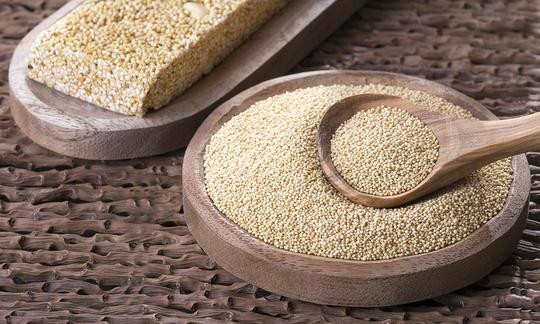

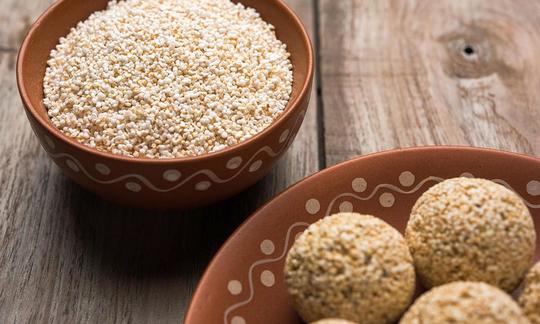

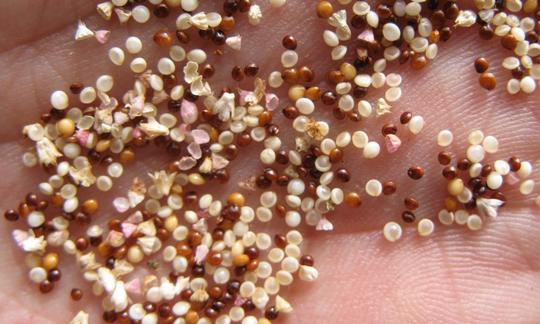

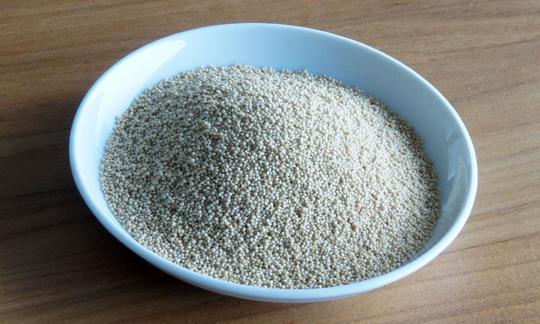



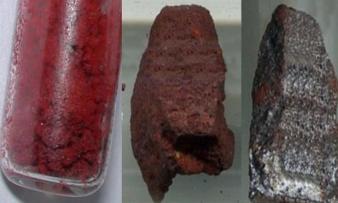



Comments